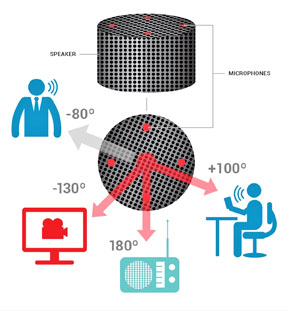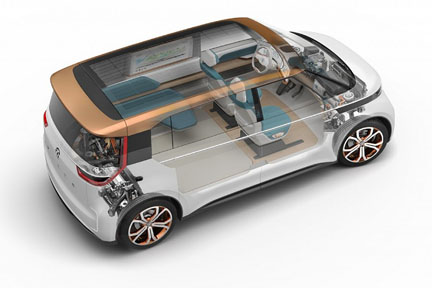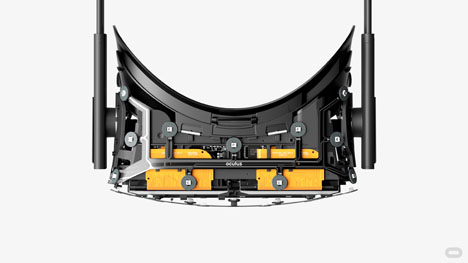CES set the stage for an exciting 2016, as concepts from 2015 are getting designed into upcoming products. Display technology is fast approaching its apex, as 4K televisions with HDR capabilities set the new benchmark and most TV manufacturers displayed 8K models, hinting at what’s to come. Likewise, automotive technology was front and center; nearly every automotive exhibitor showcased an electric vehicle capable of surpassing 200 miles on a single charge — the previous standard set by the Tesla Model S. Ford demonstrated how its vehicles can remotely talk to smart devices. On the other end of the spectrum, comparatively lower-cost items such as Oculus Rift virtual reality headsets are launching in 2016, bringing with them a new form of media engagement.
If you have never been to CES in Las Vegas, you would be amazed at its size — and at the line of 45 people waiting for a cab in front of your hotel in the morning. Electronic Products had two reporters at this year’s event. Maximilian Teodorescu looked at the big picture, while Jim Harrison tackled the technical details.
CES limited attendance this year to approximately 170,000, after 176,676 people attended in 2015. More than 3,800 exhibitors unveiled their latest technologies across more than 2.47 million net square feet of exhibit space (2015 had 3,600 exhibitors and 2.23 million square feet).
Conexant was deeply into audio with its RoomAware Optimizer processing solution, which can dramatically improve the listening experience from TV speakers, and the CX20926 low-power audio/sensor SoC, which brings voice control to battery-powered devices. Conexant also displayed a four-microphone far-field voice input processor, the CX20924, which delivers superior, 360-degree voice location capabilities combined with excellent speech recognition hit rates to smart voice applications.

Toshiba announced an automotive-grade Ethernet bridge solution for in-vehicle infotainment (IVI) and other automotive applications. The TC9560XBG supports IEEE 802.1AS and IEEE 802.1Qav, generally referred to as Ethernet-AVB, which enables stable, reliable multimedia transmissions. The company also introduced the TZ1201XBG high-performance processor for next-generation Internet of Things (IoT) applications. The processor has very low power combined with the latest graphics features to drive a high-resolution display and a very small footprint. It has a 24-bit delta-sigma A/D and takes just 78 µA/MHz in normal operation.
The plug-in electric Volkswagen BUDD-e concept is totally cute. But it’s a lot more than that. The “microbus” features a 101-kWh battery mounted in the floor for up to 373 miles of pure electric range, new interfaces with touch and gesture control, and next-generation display and ergonomic concepts. The van is 181 inches long, 76.3 inches wide, and 72.2 inches high. No word on availability.

NXP Semiconductors showed a single-chip, 77-GHz radar transceiver for ADAS in a tiny 7.5 x 7.5-mm package with very high-resolution performance. Its power consumption is 40% lower than that of current radar ICs. This device does not have a part number yet, but limited samples have been shipped.

Sensor-filled virtual reality gear creates an immersive experience
CES 2016 marks the year that virtual reality will reach critical mass and break into the consumer segment: Oculus Rift and HTC Vive VR headsets will soon be available for purchase after years of anticipation. This year’s CES gave attendees, including reporter Maximilian Teodorescu, the opportunity to experiment with the finished products (or nearly finished product, as in the case of the Vive). To read more about this experience, go to ElectronicProducts.com. In the meantime, let’s look at the underlying hardware that powers the headsets.
The Oculus Rift features a 110-degree field of view, two 1,080 x 1,200 OLED screens, with a combined resolution of 2,160 x 1,200, and a 90-Hz global refresh rate. The refresh rate works in tandem with a low 2-ms display persistence to ensure that the headset eliminates the motion blur traditionally seen in a 60-Hz monitor.

The Rift’s screens may be conveying the information, but it’s the sensors that permit the head tracking needed to make the experience truly immersive. Oculus uses a bevy of accelerometers, gyroscopes, a magnetometer, and 260-degree position tracking with six degrees of freedom. The tracking system — dubbed “constellation” — is enabled by an external infrared camera that visually tracks objects outfitted with infrared LEDs set to specific blink patterns. Placing these LEDs at precise locations allows the system to differentiate between what it’s tracking and transmits the device’s location with up to sub-millimeter accuracy, at near-zero latency.
Unfortunately for the average consumer, Oculus’ minimum compute requirements are very demanding: an NVIDIA 970 GTX or AMD R9 290 GPU with an HDMI 1.3 video output, an Intel i5-4590 CPU, 8 Gbytes of RAM, and Windows 7 with SP1 or newer — in other words, an up-to-date PC. The unit itself will cost $600 and include an Xbox One controller. Additional wireless-touch controllers may be purchased.
The HTC Vive’s dual-display screens have identical specs to those of the Oculus, with the exception of adhering to a 9:5 aspect ratio. Where the two headsets differ is mostly in their use of infrared cameras.
Unlike the Oculus, which uses a single infrared camera to track the headset’s position, Vive’s spatial awareness relies on two wireless infrared cameras placed in separate corners of a room. The cameras sweep the area with IR laser lines and trigger IR sensors placed within the headset and the wireless 6-axis controllers, allowing their positions to be deduced. Vive’s StreamVR software will actually model the room to create up to a 15 x 15-foot 3D space surrounding the user, elevating the virtual experience beyond the computer seat.
With the IR sensors, Vive and its two controllers have approximately 70 sensors, including gyroscopes and accelerometers. Another distinguishing feature of the Vive is a front-facing camera used with the modeling software to create a wireframe surrounding the exterior of the VR space. The “chaperone” system alerts users when they’ve approached the boundary of their VR space.
Vive’s cost and hardware requirements have not been revealed, but that information should be available this month when the unit goes on pre-order. Experts predict its cost will surpass that of the Oculus because it includes two wireless controllers and a second IR camera.
Advertisement
Learn more about Electronic Products Magazine





